ORNITHOPTER

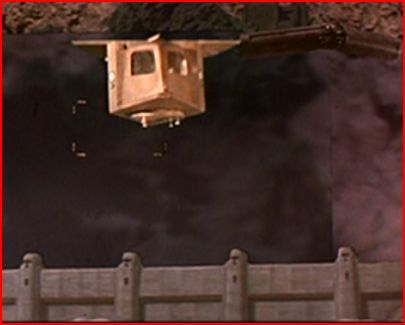 | 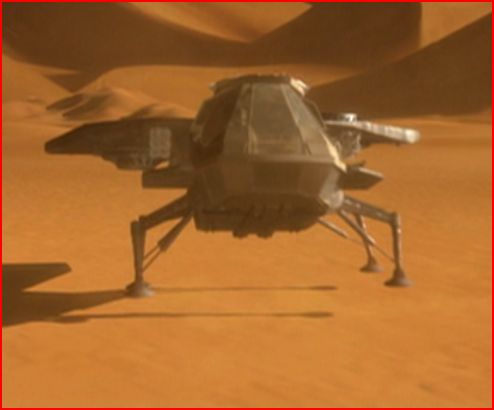 |
Ornithopters, or simply ‘thopters, are the primary means of atmospheric transportation in the Dune universe. These aircraft, ranging in size from personal, 4-person models upward, used movable, “flapping” wings (“Ornith” is the Latin prefix meaning “bird”) in addition to jet engines for its propulsion; the takeoffs could be quite vigorous. The closest Earthly equivalent would be the helicopter.
In the 1984 movie, as well as the 2000 miniseries, the ‘thopter designs did not incorporate the true “flapping” wings of the novels; the square-shaped 1984 ‘thopter (left and the conceptual art) was fixed-wing, while the wings of the 2000 ‘thopter (right) moved to change the direction of thrust from built-in “fans”.
SPICE HARVESTER
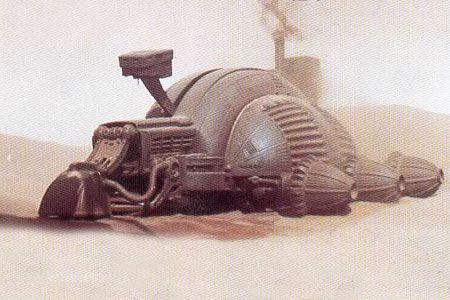
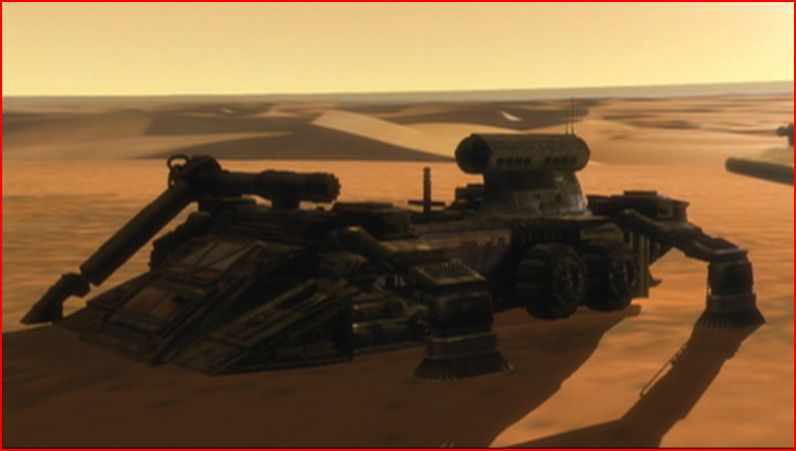 | 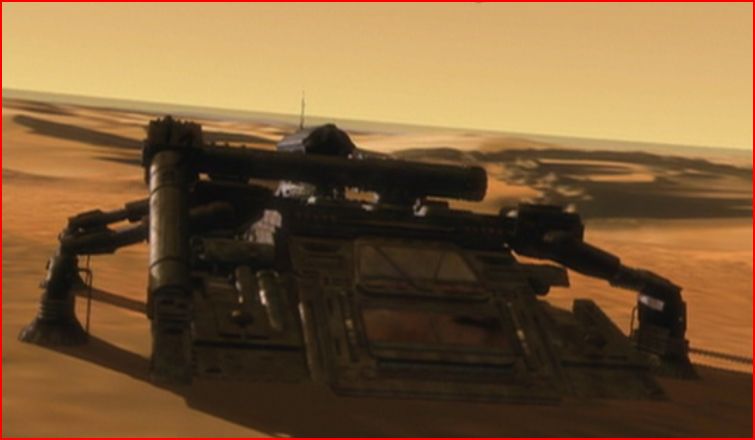 |
Spice harvesters are one of, if not THE most important part of Dune’s economy. Resembling massive floating beetles, these mechanical behemoths are flown in when a spice patch is located to harvest the spice (melange) in massive quantities; the plumes of waste sand blown out of the harvester as the spice is separated are often visible for miles. Spotting ‘thopters and the harvester’s carrier are never far away, for there is always a sandworm near a “spice blow”. (The 1984 harvester design is above, the 2000 miniseries below.)
GUILD NAVIGATOR TRAVEL CHAMBER
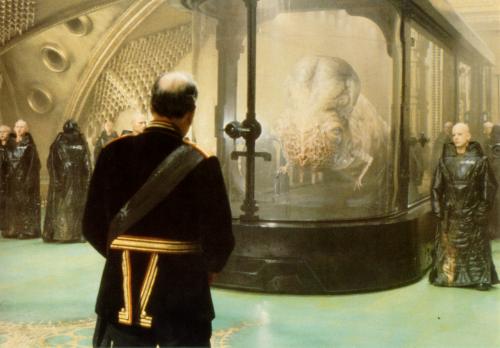
Guild Navigators were, once, humans; they have been genetically altered by massive overdoses of spice to better see into the fabric of space-time so they can safely navigate the massive Guild Heighliners “outside” normal space. Due to this mutation, Navigators require a special environment engineered to supply a constant stream of spice intake; the atmosphere is so laden with spice essence that it is poisonous to normal humans. Navigators must still ingest concentrated spice tablets in order to “see” the safe course. The chamber provides such an enclosed environment so they can safely interact with unaltered humans.
KNOWLEDGE BOOK
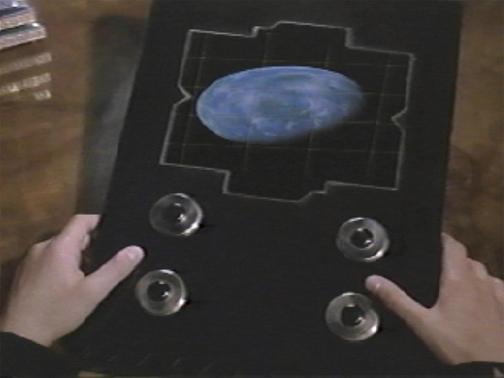
In the novels, knowledge book magnified pages on a filmstrip to a readable size. Books of any length, from educational lessons to the Orange Catholic Bible, were stored on this equivalent of microfilm. In the movie it appeared as a more clumsy playback device for educational material.
TRAINING FIGHTER
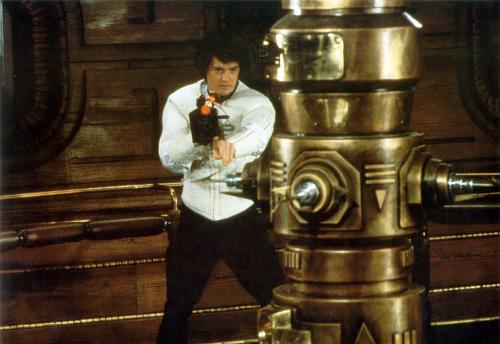
An automaton sparring partner, capable of using any of the bladed weapons common in the Dune universe. The machine uses real blades, as it is seen pointless to practice without them, and could match the expertise level of the student.
STILLSUITS
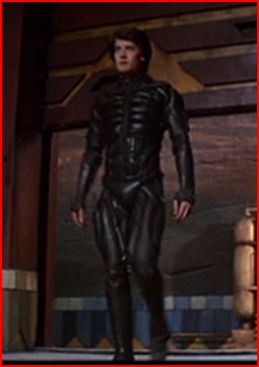 | 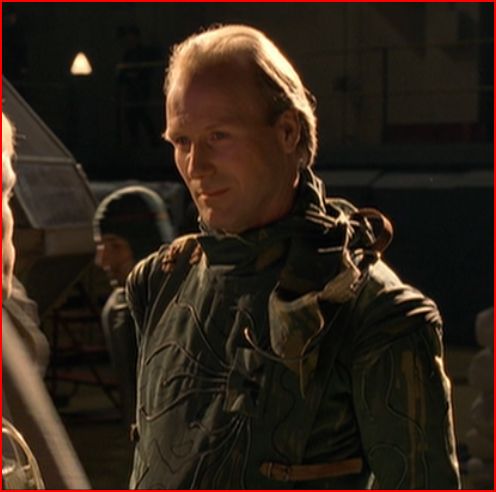 |
The stillsuit is the single most important item in the survival of the human race on Arrakis. To understand just how critical the stillsuit is to the people of Dune, one must understand something of the ecology of this unique planet.
To say water is scarce on Dune is an understatement of the highest degree, like saying it takes a little heat and pressure to make flawless diamonds. There is no standing water anywhere on the planet, there are never clouds, and this planet has not known rain in thousands of years. For the Fremen of the deep desert, this means a preoccupation with moisture – not water, but moisture – in order to survive.
This means that each particle of water – each tiny, weightless droplet to the smell of it must be captured and reclaimed. The stillsuit seals the body into a self-contained system that captures the sweat, the eliminations, even the water vapor that is exhaled with each breath. The mechanisms of the suit extract, purify and collect that moisture into catchpockets, which the suit’s wearer can then consume – and survive for more than a few precious moments in the vast arid desert that is Dune.
The designs of the stillsuit for the movie (left) and miniseries (right) did take liberties for the requirements of filmmaking; for example, more of the face is exposed than the stillsuits of Herbert’s novels.
WEAPONS:
CRYSKNIFE
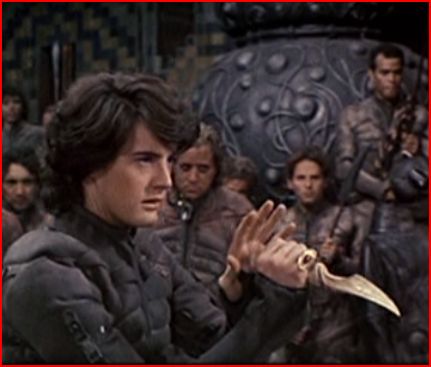
A personal weapon of mystical import to the Fremen, the crysknife is made from the tooth of Shai-Hulud – the mighty sandworm (a secret no outworlder should know, and no outworlder is allowed to possess one on pain of death). If not “fixed” by the wearing of the knife next to the skin of the owner, the blade would disintegrate in a short time.
PERSONAL SHIELD
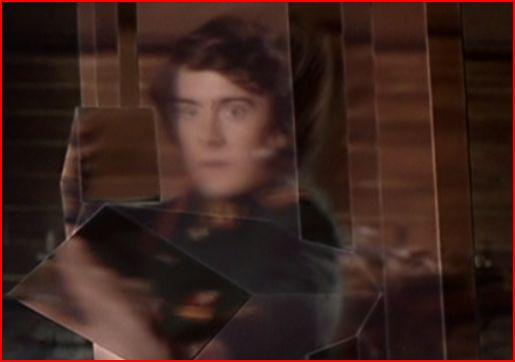 | 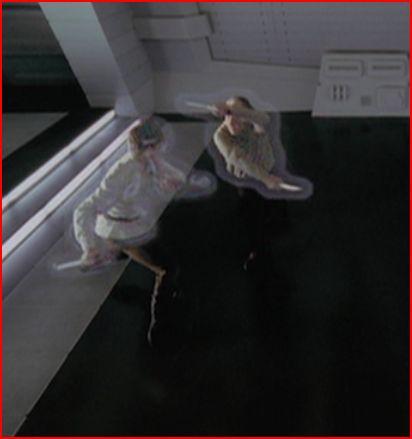 |
The sole reason for the return to bladed weapons, this force shield made personal combat truly personal once more. Should the energy beam from a lasgun make contact with a shield, an atomic reaction would take place that was fatal to both parties and much of the landscape around them.
The shield worked by limiting molecular movement through it; if something tried to move too quickly through the shield, it would be stopped. A projectile, either delivered from a weapon, thrown, or thrust (as in a sword or knife) would be repelled. It did not, however, stop slow-moving objects (or air). So, a person training in hand-to-hand combat would learn to abruptly slow his attack to accommodate that feature, and slip the blade through the shield (and the vitals of his opponent) just slowly enough that the shield would allow its passage.
However, it had been quickly proven that the use of the personal shield in the deserts of Arrakis was more deadly than not: it acted like a magnet to the great sandworms, who would ignore territorial boundaries to silence that device; it drove them quite mad.
Paul Atreides, of course well versed in modern hand-to-hand combat, initially finds his shield-based training puts him at something of a disadvantage with the Fremen; their attacks would not slow before the strike.
Weirding Module
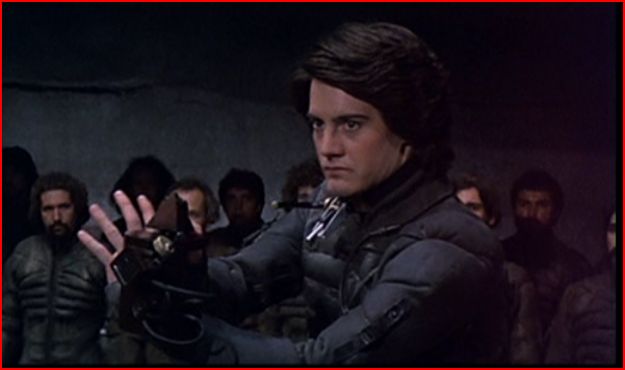 | 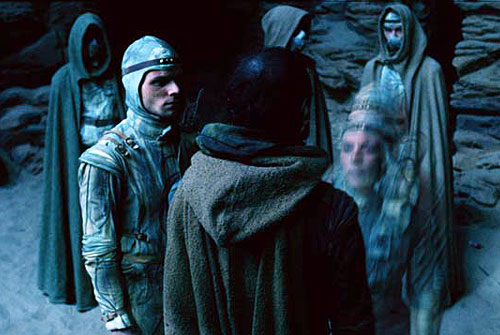 |
A product of the Lynch movie alone, this device (above left) appears to be the filmmaker’s way of illustrating the “weirding way” of the novel: a form of personal combat taught to the Fremen by the Lady Jessica, Paul Atriede’s Bene Gesserit mother. The “weirding way”, as described by Herbert and portrayed in the 2001 miniseries, was a system of controlled movement and redirection of energy and force, reminiscent of judo or ju jitsu (see above right).
In the film, the module, a combined throat unit/hand-held projector worn by the Fremen warriors, was activated by and amplified a “chuffing” noise in the throat, causing a sonic disruption; an amplification (or perhaps a focus) of the wearer’s energy. It was portrayed as used in military assaults rather than as a personal fighting style. Also as might be expected, at the climax of the film Paul was able to deliver a final, killing “blow” (fracturing the marble floor in the process) without the module after he vanquished his Harkonnen foe in single combat.
The weirding module was a complete departure from – indeed, it was the antithesis of – Herbert’s description of the fighting form. It was not well received by knowledgeable filmgoers.
written by Dusty K.
with John Pickard